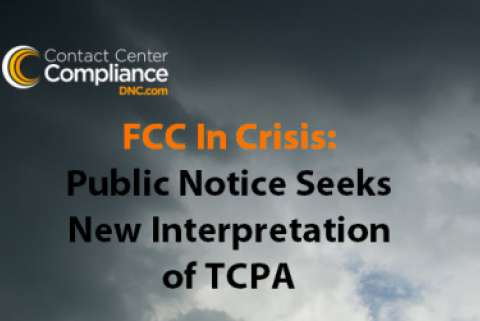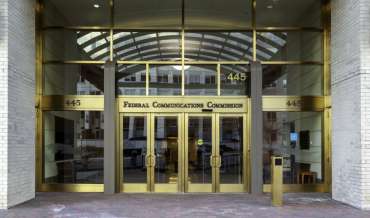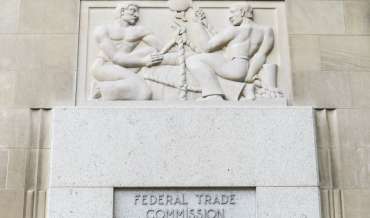Update: If you would like to contribute comment to the FCC, PACE is leading efforts to educate the FCC on these important issues. Please send your recommendations to Josh Stevens at Mac Murray & Shuster, LLP, jstevens@mslawgroup.com. Comments are due to the FCC on June 13th, so please share your thoughts by June 9th.
Based on reading the Federal Communication Commission’s (FCC) recent public notice on the Telephone Consumer Protection Act (TCPA), it appears they are in crisis mode. Of course, there’s good reason for them to panic. March’s court ruling in ACA International v. FCC invalidated their interpretations of the TCPA and essentially erased years of regulatory decisions. Now they are questioning the extent of their authority.
What’s left is the FCC scrambling for new answers to a variety of old questions that require quick resolution. The answers will deeply impact the telemarketing industry and hopefully reduce the number of ridiculous TCPA lawsuits which have risen from year to year.
The Consumer and Governmental Affairs Bureau identified several key concerns on which it seeks comments. Those include the scope of the ATDS definition, how to treat calls to reassigned numbers, and the standards for revoking consent.
Below is a summary of the FCC’s Public Notice filed on May 14, 2018 along with a sampling of questions addressing the issues. As always with requests of this type, the answers to these questions will themselves create new questions that require attention to fully cover all of the issues.
Key Issues For The FCC’s Redefining Of The TCPA
1. What constitutes an “automatic telephone dialing system” (ATDS)?
The TCPA defines an ATDS as “equipment which has the capacity—(A) to store or produce telephone numbers to be called, using a random or sequential number generator; and (B) to dial such numbers.” On this issue, the FCC dissects the wording of the TCPA’s definition of an ATDS.
- Define “CAPACITY”
The FCC seeks comment on how to more narrowly interpret the term “capacity”.
Questions:
a. Does equipment have the capacity if it requires the simple flipping of a switch?
b. What kinds of telephone equipment qualify as an ATDS?
- Define “AUTOMATIC”
The FCC seeks comments on the functions a device must be able to perform to qualify as an ATDS. The focus is on the interpretation of the term “automatic”.
Questions:
a. How “automatic” must dialing be for equipment to qualify as an automatic telephone dialing system?
b. Must the system dial thousands of numbers in a short period of time?
- Define “RANDOM OR SEQUENTIAL NUMBER GENERATOR”
The FCC seeks comments on previsions concerning the phrase “random or sequential number generator”. The problem involves conflicting rulings in the 2015 TCPA Declaratory Ruling and Order in that it 1) indicates that a device must be able to generate and dial random or sequential numbers to meet the TCPA’s definition of an autodialer; and 2) suggests a competing view that equipment can meet the statutory definition even it if lacks capacity.
Question:
a. If equipment cannot itself dial random or sequential numbers, can that equipment be an automatic telephone dialing system?
- ATDS PROHIBITIONS
The statute prohibits making any call using any ATDS. An issue of concern is that without a narrower interpretation a smartphone could be considered an autodialer if it is configured with the necessary software.
Questions:
a. Does the prohibition on making calls using an ATDS apply only to calls made using equipment’s ATDS functionality?
b. If a caller does not use equipment as an automatic telephone dialing system, does the statutory prohibition apply?
2. How should reassigned wireless numbers be treated under the TCPA?
The ACA International ruling vacated the FCC’s interpretation of the term “called party” in the TCPA statute which addresses calls “made with the prior express consent of the called party”.
- Define “CALLED PARTY”
The FCC seeks comment on how the term “called party” should be interpreted for calls to reassigned numbers.
Questions:
a. Does the “called party” refer to “the person the caller expected to reach”? Or does it refer to the party the caller reasonably expected to reach?
b. Is a reassigned number safe harbor necessary, and if so, what is the FCC’s specific statutory authority for such a safe harbor?
3. How may a called party revoke “prior express consent” to receive robocalls?
The court found that “a party may revoke her consent through any reasonable means clearly expressing a desire to receive no further messages from the caller.”
- OPT-OUT METHODS
The FCC seeks comment on what opt-out methods meet the standard of being sufficiently clearly defined. It must be easy to use such that “any effort to sidestep the available methods in favor of idiosyncratic or imaginative revocation requests might well be seen as unreasonable.”
Questions:
a. What opt-out method would be clearly defined and sufficiently easy to use for unwanted calls?
b. Must callers offer all or some combination of such methods to qualify?
4. Comment is sought on two pending petitions for reconsideration of the Commission’s Broadnet Declaratory Ruling.
One petition asks the commission to reconsider its interpretation of “persons” and clarify that federal government contractors, regardless of their status as common-law agents, are “persons” under the TCPA. The other petition asks the commission to reconsider its reliance on common-law agency principles and clarify that contractors acting on behalf of the federal government are not “persons” under the TCPA.
- Define “PERSONS” AS CONTRACTORS
The FCC seeks comments on issues raised in the petitions concerning the interpretation of the word “persons” and how it relates to contractors.
Questions:
a. Are contractors acting on behalf of federal, state, and local governments “persons” under the TCPA?
b. How is a state or local government official, or a contractor making calls on their behalf, legally similar to or different from federal government callers?
5. Renewed comment is sought on the pending petition for reconsideration of the 2016 Federal Debt Collections Rules.
The FCC was asked to reconsider several aspects of the rules, including the applicability of the TCPA’s limits on calls to reassigned wireless numbers. In light of the court’s opinion on reassigned numbers, the FCC seeks renewed comment on this and other issues raised by the petition.
- Questions:
a. Do persons who are not federal contractors collect federal debts?
b. Does the Budget Act amendment underlying the 2016 Federal Debt Collection Rules undermine the rationale of the Broadnet decision?
You can review the FCC’s Public Notice in its entirety at the FCC website. Comments are due by June 13, 2018. Expect the FCC’s reply on June 28, 2018.
Closing Comments
In March, the court reversed several key provisions in the FCC’s 2015 TCPA Declaratory Ruling and Order with their decision on ACA International v. FCC. The court’s decision essentially erased the FCC’s previous interpretation of the TCPA and limited their regulatory authority going forward. That takes us back to square one with no industry guiding interpretation of the TCPA.
From the FCC’s public notice, one can sense them scrambling to understand what they should to do next. The FCC’s now vacated interpretation of the TCPA took years of review before implementation. They are no doubt feeling the pressure from businesses and the courts to finalize solutions to the questions at issue in the public notice. At the same time, their authority over the TCPA has become an internal question since the ACA International ruling.
When can be expected as a resolution is anyone’s guess. Once the responses from this recent public notice are reviewed, the FCC is likely to issue a Declaratory Order clarifying responses to the public notice or a Notice of Proposed Rulemaking. We can only wait and see.
Further Reading





